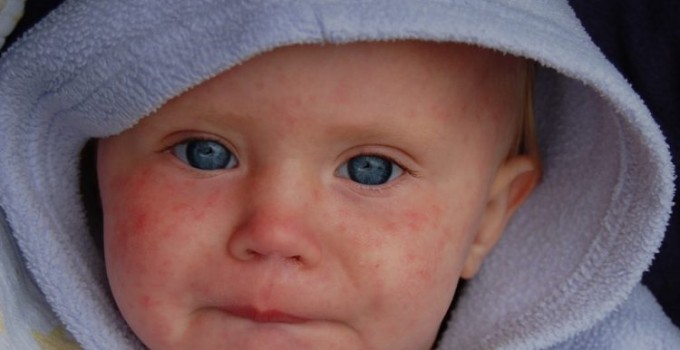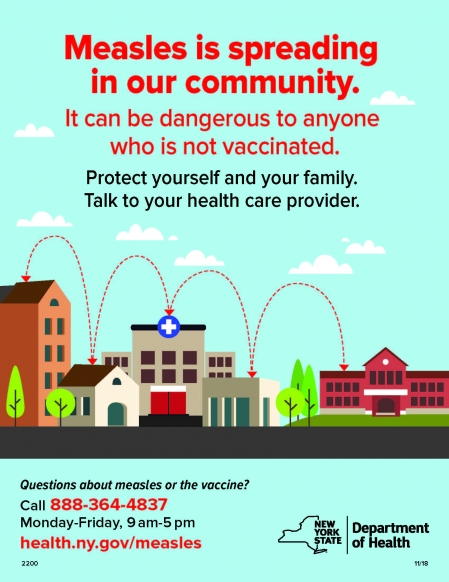Is Measles Making a Comeback?

Currently, there is a measles epidemic in the United States. The entire event appears to be linked to an amusement park based in California. To give perspective, since January 2019, 121 cases of the measles have been reported in 17 states and Washington DC. Contrast this with 23 measles outbreaks documented in 2014 resulting in 644 cases being reported. One of those was a large instance of 383 cases which occurred predominately in Amish communities located in Ohio. The populace was largely unvaccinated. Furthermore, outbreaks associated with the 2014 epidemic were tied to the Philippines, which also experienced a massive outbreak that same year.
What Keeps Measles Away
Yes, measles is highly contagious. Data from the CDC tells a sobering story. Ninety percent of non-immune people get sick or infected with the measles after being around an infected person. However, widespread vaccination saw a sharp decline in measles cases, so much so it was declared eliminated in the US in the year 2000. Vaccines are credited with keeping the illness suppressed.
Children should receive their first measles vaccine between one year and fifteen months of age, with the second dose occurring between ages four and six. However, data from the Center for Disease Control and Prevention show 1 in 12 kids are not getting their first dose at the appropriate time. All of this points to a sobering question, “Are measles here to stay?” Before we can answer that, let’s take a cursory look at the infection itself.
What is Measles and How Dangerous is it?
As it develops, the measles virus causes a respiratory system infection. The incubation period usually lasts around 12 days or so. Afterward, primary symptoms including cough, runny nose, or both will begin first. In addition, the respiratory symptoms are typically accompanied by fever and red rimmed eyes. It’s not uncommon for the symptoms to continue for several days before others begin to appear. Of course, the obvious symptom of measles is the one we are all familiar with. The undeniable reddish–brown rash which shows up 3 to 5 days after individuals begin to display initial symptoms. Typically, the rash presents near the top of the forehead, then spreads to the infected person’s face, neck, torso, before ultimately spreading to their arms, legs, hands and feet. During this time, fever can spike to as much is 104 degrees.
However, most measles patients return to normal within just a few weeks and suffer no complications. Yet, sometimes up to 40% of measles cases experience some sort of issue like croup, blindness, sores, diarrhea or ear infection. Of those cases, most of them occur in individuals under the age of five or people above the age of twenty. Typically, these individuals are immuno-compromised.
In addition, some patients suffer severe complications like encephalitis (swelling of the brain). In these instances, complications will cause death in two out of every one thousand child cases. Even so, pneumonia remains the chief concern as it is the complication responsible for causing the most deaths world wide.
Measles 2019 Outbreak Origin and Cause
 Typically, a measles outbreak will begin when an individual, known as patient zero, travels overseas and brings the infection back. This is common in countries with a high rate of annual measles cases. The virus then passes on to other individuals who are unvaccinated. As for our current outbreak, (New York and Washington) measles were spread among members of small communities who tend to opt out of vaccinating their children. For New York, orthodox Jewish communities were most affected and in Washington DC, Slavic immigrants who are opposed to vaccination spread the disease after contracting measles. Since both communities were highly insulated, measles spread quickly and moved at a rapid pace to, neighborhoods, schools, the marketplace, work sector and outside communities.
Typically, a measles outbreak will begin when an individual, known as patient zero, travels overseas and brings the infection back. This is common in countries with a high rate of annual measles cases. The virus then passes on to other individuals who are unvaccinated. As for our current outbreak, (New York and Washington) measles were spread among members of small communities who tend to opt out of vaccinating their children. For New York, orthodox Jewish communities were most affected and in Washington DC, Slavic immigrants who are opposed to vaccination spread the disease after contracting measles. Since both communities were highly insulated, measles spread quickly and moved at a rapid pace to, neighborhoods, schools, the marketplace, work sector and outside communities.
The entire epidemic is a catch 22 because most states have laws to ensure children are vaccinated. However, almost all of states allow some sort of religious exemption. Furthermore, 17 states allow parents to refuse the measles vaccine for moral exemptions or if they just would rather not vaccinate their child. It’s no surprise both outbreaks occurred in states allowing moral exemption, at least at the time of the outbreak.
The good news is the CDC reports measles is not endemic. This means the disease has not begin to manifest a constant presence in any portion of the United States. However, if vaccine refusals continue, and adults fail to realize they need or have missed necessary vaccines, measles could come back.
How to Fight Measles
Therefore, unless your child is immunocompromised, it’s important to make sure they receive the proper measles vaccinations according to their age. As an adult, if you are unsure about your immune system, talk to your doctor and ask for your vaccination records. The only way to completely eradicate measles from the population is to ensure all members of that population are immunized. Furthermore, since this involves eliminating the disease from every country, a global perspective must be maintained. Every country should join the fight against measles to ensure the safety of our entire population and the prolonged health of every individual.
If you have questions concerning this post, or are unsure about your measles vaccination, speak with your primary care physician. If you are an IPS Compounding customer and are having trouble contacting your doctor, feel free to contact us. We will work to make sure you get the information you need so you can make informed decisions about your health.
feature image credit: Dave Haygarth/Flickr


